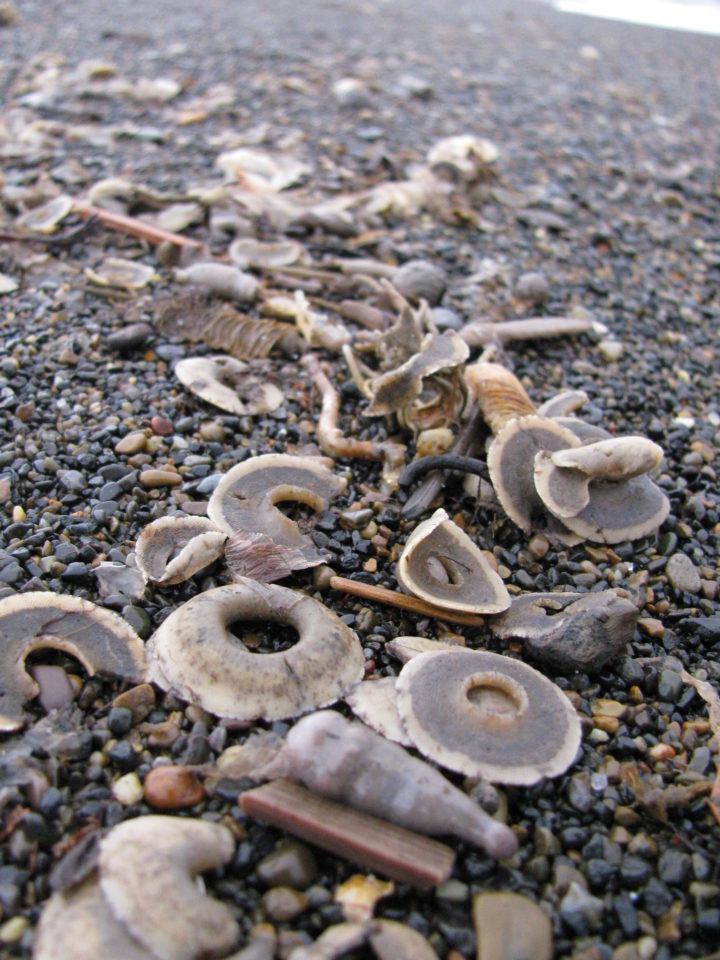Preparing for Surprises
Published by Ocean Conservancy
New shipping lanes open as summer sea ice decreases. Wildfires spread as tundra thaws and forests dry out. Marine debris clumps on rocky shores. Global change is visibly changing Arctic ocean and coastal environments. And at the same time, invisible changes are accumulating.
Ten years ago, parts of the cold, wind-tossed Arctic Ocean crossed an ocean acidification threshold. Ice melt and carbon dioxide from the atmosphere made surface seawater chemistry hostile to calcium carbonate minerals, naturally found in the shells of bivalves, marine snails, and some plankton. Ocean acidification in the Arctic hasn’t gotten as much press as it has in other parts of the country, where it has endangered the United States shellfish aquaculture industry. In the Arctic and elsewhere, ocean acidification is one of many climate-related drivers altering the marine ecosystem.
But we don’t have enough information to develop a detailed picture. We don’t know how most Arctic species will respond to ocean acidification, and we also don’t know how Arctic ecosystems will respond. It’s possible that ecosystem functions like supporting fisheries and providing habitat will not change, but it’s also possible that important links in the Arctic marine food web will break, hurting the human communities that depend on the foods and cultural importance of marine species. Most model projections only offer broad generalizations based on the entire body of ocean acidification research, but we know that fisheries and local traditions often center on specific species. Scientists are getting closer to understanding impacts on specific fisheries, but the information still isn’t specific enough to help managers know exactly how and when to take action.


Another thing that’s clear: ocean acidification isn’t the only stressor acting on Arctic marine systems. Walruses, for example, might experience gradual changes in the composition and quality of prey from ocean acidification and warming, while also suffering a major threat: habitat loss from melting sea ice. Couple these changes with environmental disruption from increased shipping traffic and oil and gas exploration, plus increased diseases associated with warming, and it’s clear that managing a single threat is not going to be enough.
There’s still so much to learn about how different marine threats will play out for Arctic species. Continuing to support scientific research and monitoring is so important. But more science isn’t enough. We’ll never know everything we hope to, and most knowledge won’t come in time to support major decisions that need to be made now. For example, last year’s Arctic Marine Assessment Programme report included a case study focused on the Greenland shrimp fishery. This economically important fishery is relatively data-rich, given its outsize importance on Greenland’s economy, yet researchers were unable to build a credible bio-economic model projecting ocean acidification’s impacts on the fishery due to lack of detailed information. Nevertheless, the study concluded that key actions were available to manage the fishery in recognition of this uncertainty, to build community resilience nevertheless. Bioeconomic models focusing on many fisheries in other parts of the world show that both ocean acidification’s social-ecological system impacts and adaptation measures are marked by great uncertainty.
To work within this reality, we need to manage ocean and coastal spaces in ways that account for uncertainty and expect long lag times between an action and its outcome. We need to plan for surprises. What if zooplankton are more susceptible to acidification and warming than we thought? We need to be ready for outcomes when the natural system doesn’t behave as humans expect. Walrus have already created new haulouts on the shores of northern Alaska, so who’s to say their next behavioral change doesn’t put them in the path of shipping routes? We also need to think about what “resilience” means in an everyday context for ocean and social systems, our fisheries and our coastal communities. Is it enough to be able to adjust a boat or processing plant for different fishes, or should we plan for an investment in options outside the fisheries sector altogether? The Arctic, with its multiple drivers, critical planetary importance, and focused international governance, is an excellent place to explore these questions, recognizing the limits of our knowledge alongside the need to act now before yet more threats are piled atop each other.
But of course, the Arctic is not isolated. Not only are Arctic lessons relevant elsewhere, but global problems also require global understanding and global action. That is why Ocean Conservancy works across regions, sectors and issues to promote the health of our world’s one ocean. Join us in helping make a difference for our ocean and the people who depend on it!
Sign up for our emails!
The post Preparing for Surprises appeared first on Ocean Conservancy.
Read the full article at: https://oceanconservancy.org/blog/2019/12/30/preparing-for-surprises/


